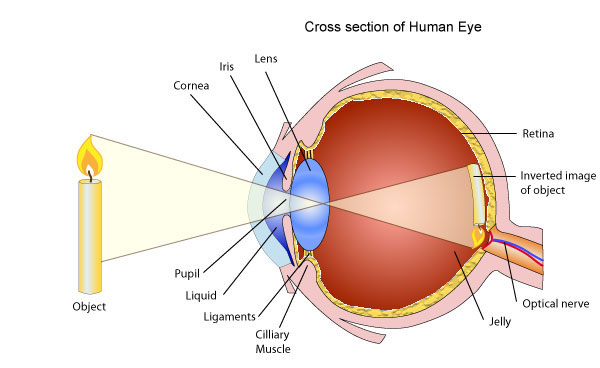Your eyes are amazing sensory organs. They help you understand shape, color and form, judge distance and alert you to potential dangers. What you perceive as “seeing” is actually the result of a complex series of events that occur between your brain, your eyes and the world around you.
 Light reflected from an object passes through the cornea of the eye and moves through the lens, which focuses it. The light then reaches the retina at the very back of the eye, where it meets a thin layer of color-sensitive cells called the rods and cones. Information from the retina travels from the eye to the brain via the optic nerve.
Light reflected from an object passes through the cornea of the eye and moves through the lens, which focuses it. The light then reaches the retina at the very back of the eye, where it meets a thin layer of color-sensitive cells called the rods and cones. Information from the retina travels from the eye to the brain via the optic nerve.
Because eyes see from slightly different positions, the brain must mix the two images it receives to get a complete picture. The light also crisscrosses while going through the cornea so the retina “sees” the image upside down. The brain then “reads” the image and turns it right-side up.
The rods and cones are what you call photoreceptors. When they are overworked, they lose sensitivity. Normally the small movements of your eyes that you make unconsciously, or regular blinking, will keep these photoreceptors sharp and happy. If you are looking at a large enough image, where your eyes can’t rest, or if you purposely hold your eyes still, you will tire out your poor rods and cones and they will adapt to this overstimulation by no longer responding. When you move your eyes to a blank space, your worn out photoreceptors create an “afterimage”. An afterimage is where your eyes produce a ghost image, like when you stare at something a little too bright and you see dark spots in your field of vision. In an afterimage, light portions of the original image are replaced by dark portions and dark portions are replaced by light portions.
Try this out for yourself by doing the following activity.
You will create the Texas state flag in some unusual colors. After you stare at this incorrectly colored flag and have worn out your photoreceptors, looking at a blank wall will create a ghost image of the Texas state flag in red, white and blue!
Activity: Negative Afterimage
Materials:
Scissors
Glue
Paper
Green construction paper
Black construction paper
Yellow construction paper
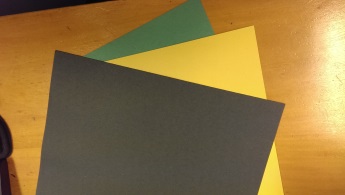
Procedure:
1. Cut your green and yellow papers in thirds, width-wise.
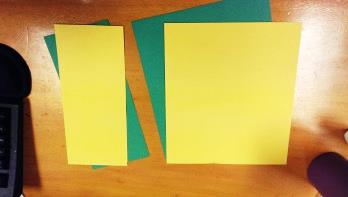
2. Cut a star out of the middle of your yellow piece.
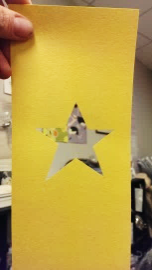
3. Glue the yellow piece to one end of the black piece.
4. Turn the black paper so that your yellow piece is placed on the left.
5. Glue the green piece to the bottom of the black piece.
6. Trim off any extra green.
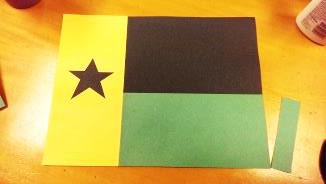
Now stare at the flag for a minute or so. Try not to have much in your peripheral vision so that you can concentrate on the flag.
Look away from the flag at a neutral colored wall or piece of paper. You should be able to see the flag in red, white and blue!
Have a school group and want to know more about how your eyes work? Sign up for an Eyeball Dissection with our Labs on Demand. These labs make a great addition to a field trip, but are also available to come to your school.
Interested in knowing more about how your body works? Visit Body Carnival, a carnival-themed interactive exhibit that explores the connections between perception and the laws of physics in the human body, at HMNS Sugar Land. Enjoy learning about the human body while investigating force, pressure, light, and color. Crawl through a giant artery to see and hear the effects of restricted blood flow, test your balance in the 10-foot Dizzy Tunnel or don a pair of vision-distorting goggles and discover how sight affects your ability to walk straight. There’s a lot to explore!


